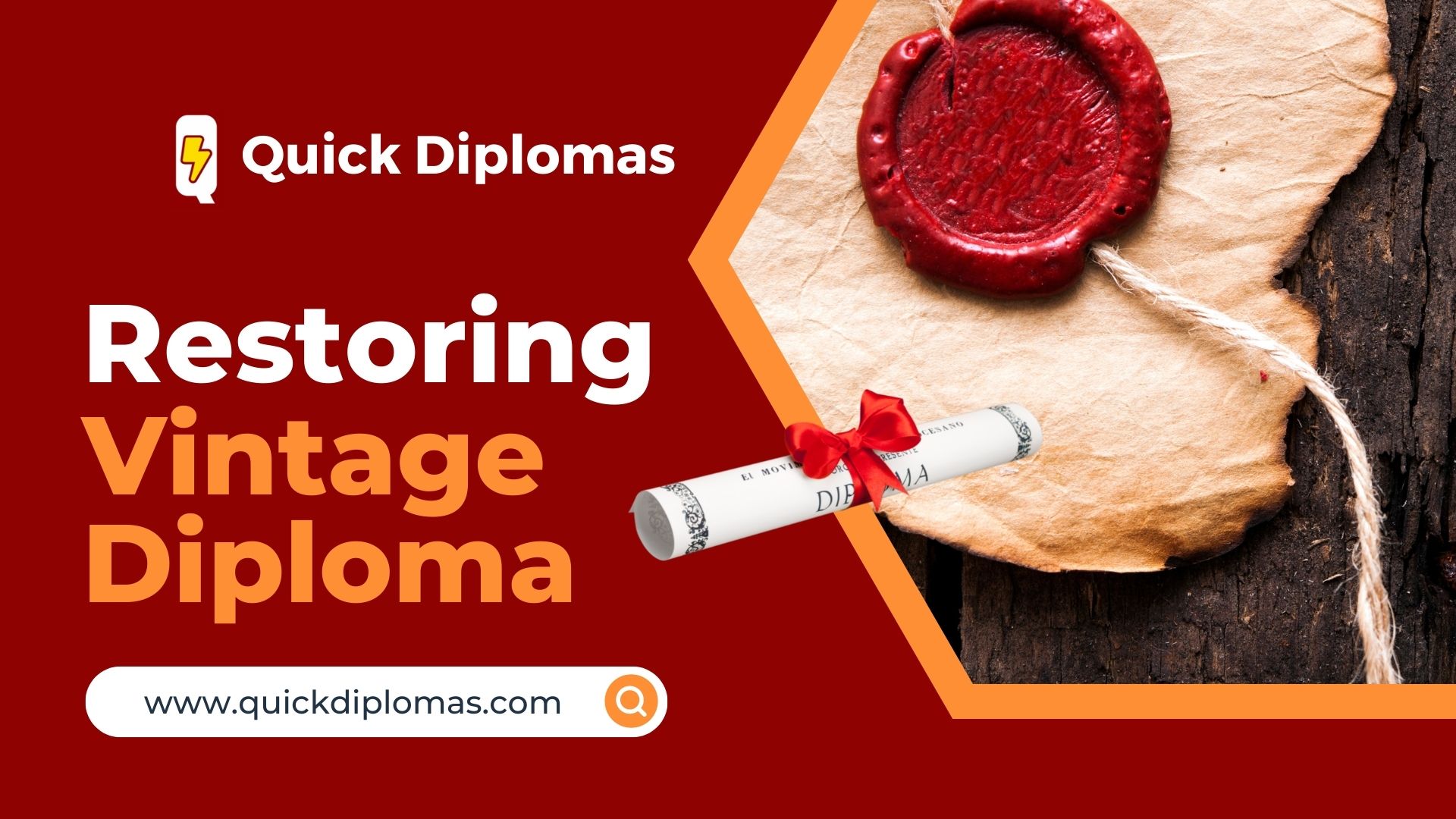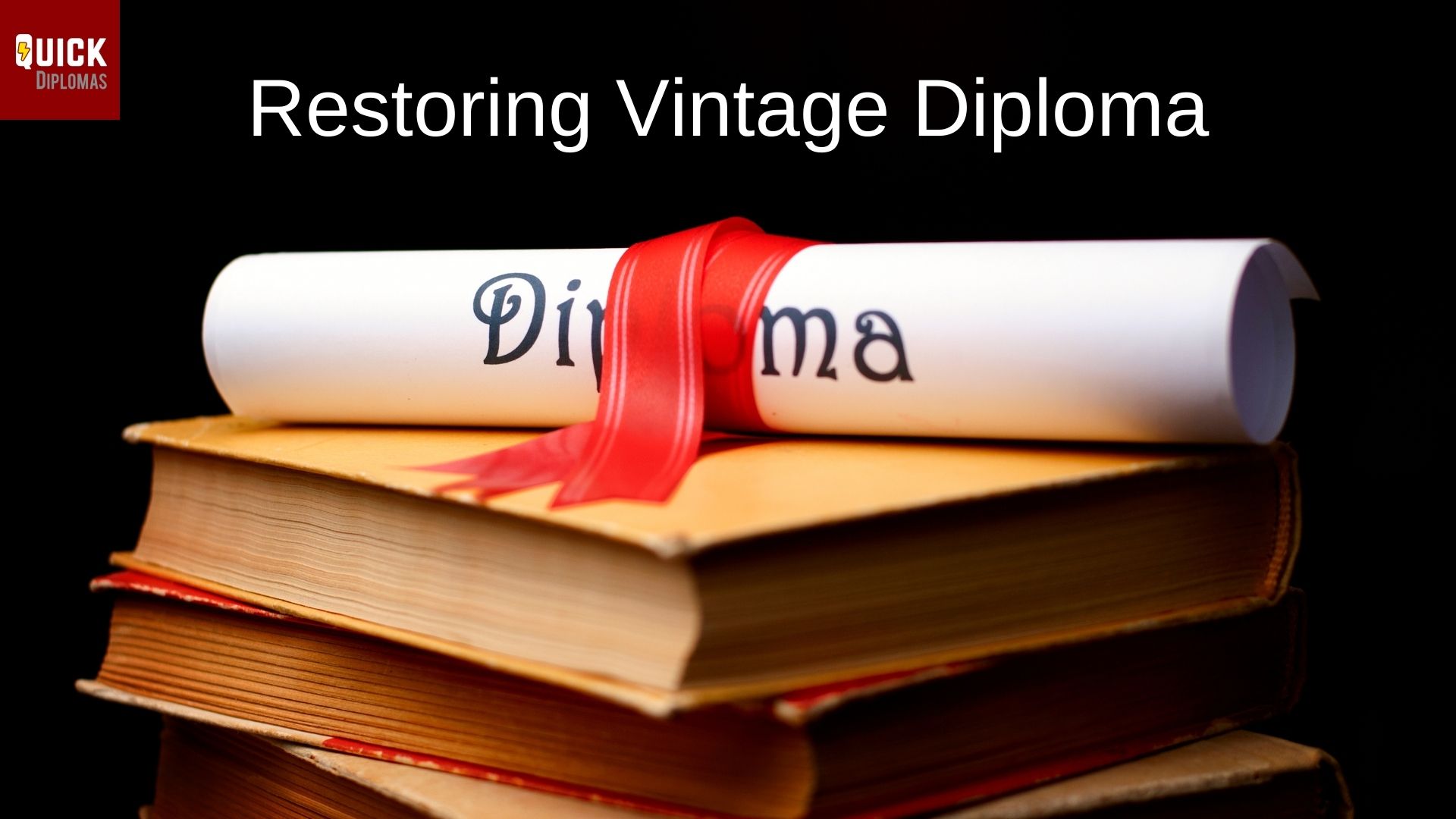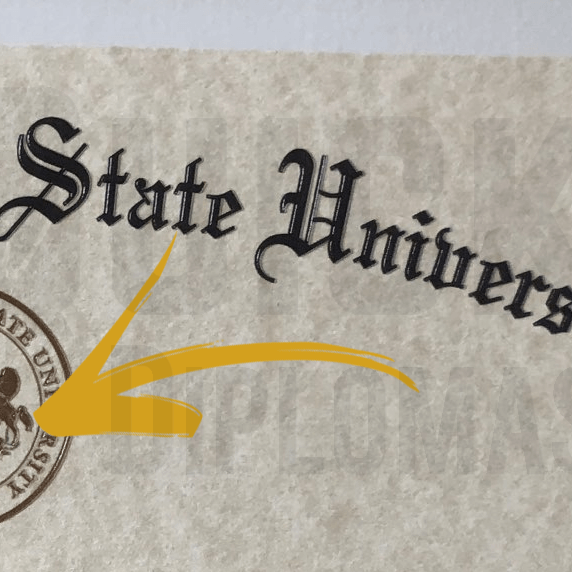
College diplomas are undoubtedly one of the most valuable possessions in anyone‘s life. It goes without saying that earning a college diploma takes a lot of hard work and effort from the aspirant. Still, even when a person preserves their college diplomas with the utmost care, there is every chance that the same diploma would fade or get damaged due to random reasons.
So, the only option in hand here is to restore those Vintage Diplomas. Now, if you feel like restoring your vintage diplomas, you may feel puzzled about the question - What are the best ways to restore Vintage Diplomas?
Well, before you take a deep dive into the recommended ways, let’s first understand a bit about the factors that contribute to the aging, fading, or damage to your vintage college diplomas.
Factors Leading to the Urge for Vintage Diploma Restoration
Most college diplomas are printed on off-white or new-white papers. The same paper fades when sunlight hits its dyes because the chemicals in the paper respond by transforming into other chemicals that do not reflect color the same way.
The paper's lignin can turn yellow in direct sunshine, altering the colors and light-reflecting properties even further. Vintage diplomas are especially vulnerable to fading and deterioration when they are left out in the open in the sun.
Because most people don't bother framing it, it begins to degrade as soon as it's up on the wall. Due to humidity, the paper begins to decompose, leading to a damaged diploma.
How to Know if Vintage Diplomas are Fading or Getting Damaged?


There are certain signs you must watch out for while checking for any damage to your Vintage Diploma. Some of those are the yellowish or brownish hues in the corners of a vintage diploma. Besides, you can look up ink fading in random areas of the document. Last, but not the least, the stamps or seals of the institution may wear out completely with time.
Consequently, if you discover any of these indicators, you should consider restoring Vintage diplomas. Additionally, you may also opt to obtain a .
Why Should You Consider Restoring Vintage Diplomas?
The answer to this question is quite straightforward - The Vintage diploma holds some big value and this is why it’s been called a Vintage Diploma in the first place. It’s not just a piece of paper, but embodies those precious years spent in a college or institution.
Besides, a Vintage Diploma carries all the information that may prove significant to your professional career. Moreover, once damaged, it's practically impossible for a college's administration to keep track of the alumni’s information as each year passes. Several vintage diplomas are so old that they were crafted by hand, making them even rarer.
Keeping the original copy safe and secure becomes even more challenging in this situation. So how can we get out of this dilemma?
The simplest approach here is restoring Vintage Diplomas. In the following parts of the blog, we will tell you some easy and simple ways to restore your vintage diplomas.
Best Ways for Restoring Vintage Diplomas


Restoring Vintage Diploma is quite a lengthy and hectic task. There are numerous large-scale programs by museums and historical organizations to salvage or repair pieces of art that have been damaged, faded, or otherwise impacted by poor environmental conditions.
Conservators specialize in repairing and preserving paper records. Your diploma restoration will be handled by the same types of conservators who work on Renaissance art.
But, there is a hefty cost all along!
The cost of hiring a conservator for restoring Vintage Diploma will always be high given the degree of specialization required. In addition, the cost might be exacerbated by the age of the diploma and the quality of the paper used to print it. In order to produce acid-free paper, which has a pH of 7 or higher, the active acid pulp must be removed during processing. This can be done with any cellulose fiber.
A diploma from the 1970s or later is likely in good shape because of the widespread usage of acid-free paper since that time. It is far more difficult, however, to restore a Vintage diploma that dates from the 1950s to the 1970s, and the results will never be fully flawless.
For example, a diploma that has been burnt or has been damaged in any way cannot be simply repaired, according to most experts. In order to properly reconstruct lost areas in a viable manner, little can be done with burned edges. Tears, on the other hand, can only be reduced in appearance; they cannot be fixed.
Restoring water-damaged items is a simple matter of whitening the watermarks, whereas conservators can restore faded or blemished ink, paint, or any other pigments with care and precision. You'll have to spend a lot of time on this, and you won't receive the results you're hoping for while restoring Vintage Diploma.
So, isn’t there any feasible alternative in this grave situation?
Luckily there is. With the help and support of our professional vintage diploma restoring services, you can get a perfect replacement vintage diploma.
These options will carry all the relevant details and look exactly like your vintage diploma earned from your respective college or institution.
Besides ours, there are many more professional diploma replacement services available as well. Yet, choosing the one that does justice to your expectations is critical.
How to Choose the Best Vendor for Restoring Vintage Diplomas?
If you're considering hiring a vendor for restoring Vintage Diplomas, there are several things to keep in mind beforehand.
Experience and Reputation
When looking for a vintage diploma restoration business, the first thing to look at is the company's reputation and overall experience in the same field. One should only work with a reputable organization with a long history of success.
You can also check for the reviews and ratings provided by their old customers in the same regard. Most of the time, these reviews can help you in ascertaining the quality of service delivery in your case.
Expertise
The second thing to look at is the level of expertise in the work related to restoring Vintage Diplomas. Whether or not their service is successful will be determined in large part by this factor. As a first step, inquire about their restoration methods for vintage diplomas. It plays a significant part in achieving the intended outcomes.
Restoring Vintage Diploma may sound like an unnecessary task at the first go. Yet, given the value of these diplomas in one’s professional and personal life, every penny spent on their restoration and replacement is justified.










